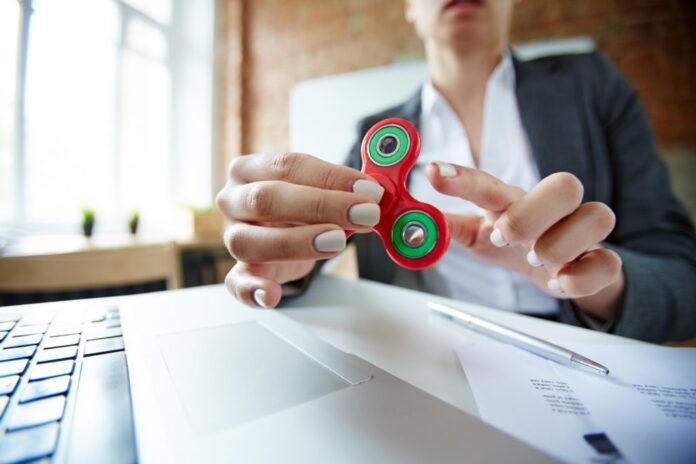Fidget toys and other sensory gadgets are continually making waves around the world and in businesses today. Yes, we are also referring to the same ever-so-popular fidget spinners that broke the internet this year and eclipsed $1B in sales worldwide. Although some identify them as toys just for kids, research shows the demand is continually increasing more and more in the workplace and that they are not just a temporary fad.
In fact, fidgeting with sensory toys in the workplace has been around for quite a while. From squeezing stress balls and excessive pen-clicking to paper clip dismemberment (a personal favorite of mine), chances are you have fidgeted at one time or another – especially if you spend a lot of time on conference calls every day. So, let’s take a deeper look at the background of this trend and the implications it could have on productivity in the workplace.
Contrary to widespread belief, fidgeting didn’t start with the spinner craze. For many, fidgeting, or using some type of instrument to keep your hands occupied, was and is something to do while working to improve productivity. For me, all I need is some thinking putty or the occasional doodle on a piece of paper to keep me focused while on a long conference call. For others, and more recently for children in school, these toys have also been used as a productivity tool to help with ADHD.
Studies have shown that fidgeting increases the neurotransmitters dopamine and norepinephrine in the same way ADHD medications do. These chemicals help sharpen focus and increase attention, and are the same reason why so many businesspeople are using fidget toys to help stay focused at work.
Reports show that adults all over the world are fidgeting away at work today and enterprises should embrace this trend that helps employees be more productive. However, these helpful tools shouldn’t be our primary focus – meaning if all we do is fidget, then it can distract us from our work. These toys should complement our focus via “back tasking” or multitasking that is done in the background, rather than be the center of our attention.
There’s no way, as humans, that we can laser focus all our attention on one thing, at any single time. Even when we’re concentrating on a specific task, we are often still taking in auxiliary noise and information in the background. This is called floating attention and it happens unconsciously. So, when you use sensory tools like doodling or playing with thinking putting, it helps us focus more on the task at hand.
Analysis
This article tackles a concept that has yet to be explored in this project: focus and our natural tendencies to wander off task. In a post-pandemic world, it will be as important than ever for employees to be productive, especially if they’re coming back to the office for the first time in months. Working from home comes with its own set of distractions, but so does working in the quiet solitude of an office. This space will have to be a desirable location away from the standard worksite, considering it’s outdoors. The designed co-working space needs to be a healthy balance between embracing the noises and natural phenomena of the outdoors while also honing focus back into work. By possibly designing an aspect of the space for fidgeting, the professional can channel their distractions into this design and improve their work productivity. It will be important to not make professionals feel like they are children with something designed for fidgeting.




